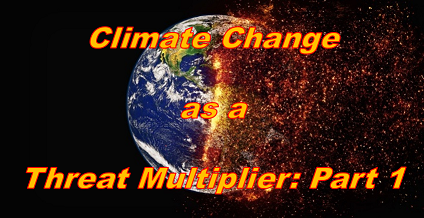[Editor’s Note: In the first of a two part series exploring climate change as a threat multiplier, guest blogger LTCOL Nathan Pierpoint, Australian Army, examines the climate challenges facing civil and military leaders around the world. Exploring the geo-political implications of rising sea levels, extreme heat, desertification, and water and food shortages, LTCOL Pierpoint’s post addresses how these environmental issues will exacerbate competition, social instability, and the potential for violence and conflict.]
“There is one issue that will define the contours of this century more dramatically than any other, and that is the urgent threat of a changing climate.” — President Barack Obama
I was recently taken by the great piece written by Ms. Sage Miller on climate change. I pushed hard to meet the Mad Scientist deadline for their recent crowdsourcing exercise on the Operational Environment – Today to 2035: What Will Change and What Will Drive it, but came to the conclusion that this issue deserved more than 1000 words. Similarly, I felt it was such a pressing issue that it deserved regular, and continuous, discussion and debate. This is because climate change is one of the most significant drivers of global instability our militaries will face to 2035. This paper is part one of a two part discussion on climate change and the wars of the future.
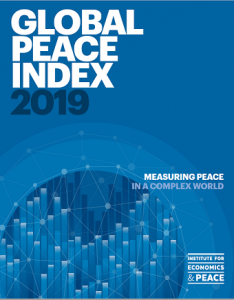 I might have said in a recent tweet about the Mad Scientist Challenge that I would talk about climate change, violent extremism, and political warfare. However it became evident after a little more research that two of these issues quite often manifested from the adverse impacts of climate change. This is because climate change, to coin a term from the most recent Global Peace Index report, acts as a threat multiplier. While climate change doesn’t automatically lead to higher levels of violence, the Global Peace Index described it best as its ability to exacerbate security threats when they stated that “climate pressures adversely impact resource availability, affect population dynamics, and strain societal institutions, which directly affects security and stability.”1
I might have said in a recent tweet about the Mad Scientist Challenge that I would talk about climate change, violent extremism, and political warfare. However it became evident after a little more research that two of these issues quite often manifested from the adverse impacts of climate change. This is because climate change, to coin a term from the most recent Global Peace Index report, acts as a threat multiplier. While climate change doesn’t automatically lead to higher levels of violence, the Global Peace Index described it best as its ability to exacerbate security threats when they stated that “climate pressures adversely impact resource availability, affect population dynamics, and strain societal institutions, which directly affects security and stability.”1
It’s important to note the impact climate change is now having on national security decision making, particularly in the U.S. On June 5, the U.S. House Permanent Select Committee on Intelligence held a hearing on the National Security Implications of Climate Change. This hearing was unique in that it called witnesses Peter Kiemel from the National Intelligence Council, Rod Schoonover from the Department of State’s Bureau of Intelligence and Research, and Jeffrey Ringhausen from the Office of Naval Intelligence. Chairman Schiff commenced the hearing by stating that climate change was 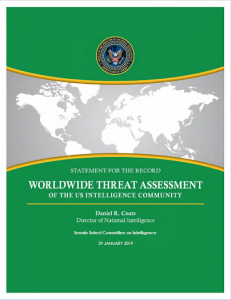 the “greatest long-term national security threat to the U.S.”2 and quoted the most recent Worldwide Threat Assessment published by the Director of National Intelligence by stating, “Global environmental and ecological degradation, as well as climate change, are likely to fuel competition for resources, economic distress, and social discontent through 2019 and beyond.”3 The key point Chairman Schiff tries to make here is that national stability needs to be underpinned by the protection and trade of national resources. A pessimist’s view would also suggest he indicates that adverse impacts to these resources directly increase the chance of conflict with others to protect or secure these resources.
the “greatest long-term national security threat to the U.S.”2 and quoted the most recent Worldwide Threat Assessment published by the Director of National Intelligence by stating, “Global environmental and ecological degradation, as well as climate change, are likely to fuel competition for resources, economic distress, and social discontent through 2019 and beyond.”3 The key point Chairman Schiff tries to make here is that national stability needs to be underpinned by the protection and trade of national resources. A pessimist’s view would also suggest he indicates that adverse impacts to these resources directly increase the chance of conflict with others to protect or secure these resources.
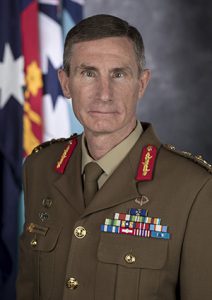
I think it’s worth mentioning at this point the emerging threat of political warfare. This issue was best explained by Australian Defence Force (ADF) Chief, GEN Angus Campbell’s recent speech during ASPI’s War in 2025 conference.”4 His stark comments that “democracies risk being out-manoeuvred by totalitarian powers unrestrained by rules, and willing to use information campaigns, cyber operations, theft of intellectual property, coercion and propaganda to weaken them,” are an indication that large power competition has risen to the fore once more.5 However, the desire for totalitarian powers to conduct these types of activities are usually driven by a threat to their own existence. In many cases, it is access to the resources that western democracies and their economies have thrived upon and use to exert their own power over the international trading landscape. In this respect, I felt the impacts of climate change were a more pressing issue due to its ability to act as a threat multiplier. As the latest Global Peace Index suggests, environmental risks of climate change and resource scarcity had the highest likelihood of triggering or exacerbating conflict through its effects on livelihood security and resource availability.6 I’ll attempt to highlight the most significant climate challenges our world faces to 2035.
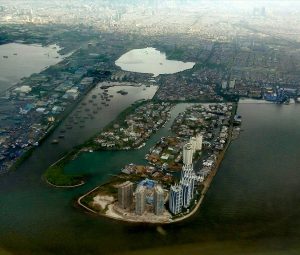
Indonesia is sinking. Since the 1970’s, parts of its capital city Jakarta have seen sea levels rise more than four meters. Scientists predict that more than a quarter of the city could be swamped by the sea by 2025.7 Jakarta is home to more than 34 million people, and one of the most densely populated cities in the world. Jakarta has also seen a rise in violent extremism, with Al-Qaeda and ISIS affiliated groups conducting a number bombings in recent years, killing hundreds.
Rising sea levels was also one example two recent King’s College Podcasts highlighted as they discussed the challenges of climate change on global security. A panel of experts also highlighted the growing concerns over air pollution, rising global temperatures, and environmental degradation as significant influences on security policies over the next century. Such examples they cited were periods of drought in Sub-Saharan Africa that sparked clashes over water, and water shortages in India that were intensifying conflicts between neighboring states.8

Rising global temperatures have also meant that deadly heat conditions, and heat related injuries, are now a regular occurrence for Soldiers. As recently as late July, there was further talk about the U.S. military recognising the threat climate change and rising temperatures were having on Soldiers across both operational and training areas. A recent report from the Pentagon highlighted that rising temperatures were exacerbating challenges the military is facing in some of the world’s most destabilized regions, and endangered individual troops and, by extension, U.S. security and preparedness. Further, the report stated that health impacts from heat have already cost the military as much as nearly $1 billion from 2008 to 2018.9 The reduced presence of Soldiers on a future battlefield, operating amongst the people, shaping and influencing the human terrain, would surely impact the decisiveness of future campaigns, and inadvertently prolong wars in the future.
As a result of rising temperatures, the world faces a significant drop in food production and increasing numbers of extreme weather events. Food production is quickly approaching the point where there are inadequate supplies to feed the global population. This is a consequence of a decline in crop yields, desertification, monsoon failure, chronic water shortages, and conditions too hot for human habitation in significant food-growing regions. As a result, significant portions of some of the world’s most populous cities — including Chennai, Mumbai, Jakarta, Guangzhou, Tianjin, Hong Kong, Ho Chi Minh City, Shanghai, Lagos, Bangkok and Manila, have been abandoned.10
 Desertification and water shortages have meant that the livelihoods of more than five million farmers in Mexico were impacted by the drought from 2002 to 2012. The response was both internal migration to the slums of Mexico City, Guadalajara, and Monterrey and international migration to the United States.11 In the fastest growing megacity in the world according to the U.N, Bangladesh’s capital Dhaka has seen mass migration into the city’s slums. While slums have existed in Dhaka City for a long time, their growth accelerated after the liberation of the country in 1971, mainly due to mass migration by the rural poor. The first significant survey of the slums and squatter population in Dhaka was conducted by the Centre for Urban Studies (CUS) in 1974 and the UN High Commissioner for Refugees which indicated the slum population was 275,000.12 According to the latest census conducted by the Bangladesh Bureau of Statistics (BBS) in 2015, 2.23 million people live in slums across the country.13 Eighty-one percent of migrants cited a climate-related cause as a main reason for their move, with most of those relocating to cities to earn their livelihood after losing their land and houses to river erosion.14 High levels of resource scarcity and strained public resources contributed to violence in these slums, with climate refugees intensifying already present social stress.15
Desertification and water shortages have meant that the livelihoods of more than five million farmers in Mexico were impacted by the drought from 2002 to 2012. The response was both internal migration to the slums of Mexico City, Guadalajara, and Monterrey and international migration to the United States.11 In the fastest growing megacity in the world according to the U.N, Bangladesh’s capital Dhaka has seen mass migration into the city’s slums. While slums have existed in Dhaka City for a long time, their growth accelerated after the liberation of the country in 1971, mainly due to mass migration by the rural poor. The first significant survey of the slums and squatter population in Dhaka was conducted by the Centre for Urban Studies (CUS) in 1974 and the UN High Commissioner for Refugees which indicated the slum population was 275,000.12 According to the latest census conducted by the Bangladesh Bureau of Statistics (BBS) in 2015, 2.23 million people live in slums across the country.13 Eighty-one percent of migrants cited a climate-related cause as a main reason for their move, with most of those relocating to cities to earn their livelihood after losing their land and houses to river erosion.14 High levels of resource scarcity and strained public resources contributed to violence in these slums, with climate refugees intensifying already present social stress.15
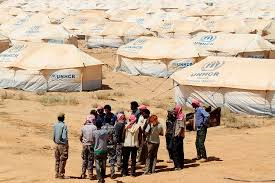
Bangladesh is not the only country facing mass migration due to the adverse effects of climate change. A recent New York Times article also highlighted the stark reality of population migration and displacement across the world. According to the article, the United Nations Refugee Agency stated that the global population of people displaced reached 70.8 million, up from 43 million a decade ago, 26 million fled across borders, and 3.5 million were seeking asylum in third countries.16 Evidence suggests that people living in less developed countries without the ability to mitigate these problems are those most likely to migrate, and that this migration has been a significant factor in increased violence in receiving areas.17
This is especially true in countries that are already low or declining in peacefulness. The drivers behind the Syrian civil war, according to some researchers, indicate that human-induced climate change was a contributing factor in the extreme drought experienced within Syria prior to its civil war. This drought lead to large scale migration, and this migration exacerbated the socio-economic stresses that underpinned Syria’s decent into war.18

Similar research has shown that climate change will impose significant stress on societies into the future. The recent New Zealand (NZ) Defence Capability Plan has a whole chapter dedicated to responding to the climate crisis in their region. In the plan they highlight that the “effects of climate change can be significant contributors to both low-level and more violent conflict.”19 Such is their concern, they have sought to increase the size of their Defence Force in order to contend with concurrent humanitarian assistance and stability operations in the region brought about through climate change.20
The influence of climate change has often taken a back seat to the threat of international terrorism and large power competition, but it is deeply intertwined with our security and stability. Violence and unrest brought about by terrorism and political warfare can weaken institutions, making society more vulnerable to climate shocks. This cycle suggests that political and socio-economic factors will continue to be the primary sources of internal strife and that climate change will continue to serve as a risk multiplier.21
I mentioned earlier that this is only Part 1 of this discussion. In this paper I sought only to highlight the growing security concerns exacerbated by climate change, not offer solutions. Part two of this discussion will employ story telling to imagine a future war influenced by the effects of climate change, resource competition, and unlikely adversaries.
If you enjoyed this post, please see:
Future Threats: Climate Change and Islamic Terror by Mr. Matthew Ader.
Climate Change Laid Bare: Why We Need To Act Now by Ms. Sage Miller, as well as her “The Implications of Climate Change for the U.S. Military” Strategic Multilayer Assessment (SMA) Speaker Session presentation
Our Arctic—The World’s Pink Flamingo and Black Swan Bird Sanctuary by Mr. Frank Prautzsch
LTCOL Nathan Pierpoint is a career Military Police Officer, having recently completed Battalion Command prior to his appointment as the Australian Army Liaison Officer to HQ TRADOC in 2019. He has also spent time as an instructor, served regularly as a staff officer in the Australian Army Headquarters, and has completed tours of Timor Leste, Iraq, and Afghanistan. LTCOL Pierpoint has a BA in Politics through the University of New South Wales, and a Masters in Defence and Strategic Studies through the Australian National University.
Disclaimer: The views expressed in this blog post are those of the author, and do not necessarily reflect those of the Department of Defense, Department of the Army, Army Futures Command (AFC), or Training and Doctrine Command (TRADOC).
1 Institute for Economics & Peace. Global Peace Index 2019: Measuring Peace in a Complex World, Sydney, June 2019. http://visionofhumanity.org/reports (20 Jul 2019). p.49
2 Caitlin Werrell and Francesco Femia, Intelligence Officials Highlight Security Risks of Climate Change in Important House Hearing, The Centre for Climate and Security, 06 June 2019, https://climateandsecurity.org/2019/06/06/intelligence-officials-highlight-security-risks-of-climate-change-in-important-house-hearing/
3 Ibid
4 Brendan Nicholson, ADF Chief: West Faces a New Threat from ‘Political Warfare’, The Australian Strategic Policy Institute, Canberra, 14 June 2019, https://www.aspistrategist.org.au/adf-chief-west-faces-a-new-threat-from-political-warfare/
5 Ibid
6 Global Peace Index p.43
7 Mark Doman, David Lipson and Ari Wu, Jakarta is Running Out of Time to Stop Itself Sinking, ABC News Australia, June 23 2019, https://www.abc.net.au/news/2019-06-24/jakarta-is-running-out-of-time-to-stop-itself-sinking/11190928?pfmredir=sm
8 Ian Dunlop, David Spratt, Existential Climate Related Security Risk. Breakthrough – National Centre for Climate Restoration, Melbourne, May 2019, https://docs.wixstatic.com/ugd/148cb0_a1406e0143ac4c469196d3003bc1e687.pdf, p.9
9 David Hasemyer, Military Fights a Deadly Enemy: Heat, InsideClimate News, NBC News, 23 Jul 19 https://www.nbcnews.com/news/us-news/military-s-climate-change-problem-blistering-heat-killing-soldiers-during-n1032546
10 Ibid.
11 Existential Climate Related Security Risk p.54
12 Professor Nazrul Islam, Dr. AQM Mahbub, Dr. Nurul Islam Nazem, Urban Slums of Bangladesh, The Daily Star Bangladesh, 20 June 2009, https://www.thedailystar.net/news-detail-93293
13 Staff Correspondent, The Number of slum dwellers in Bangladesh increases by 60.43 percent in 17 years https://bdnews24.com/bangladesh/2015/06/29/number-of-slum-dwellers-in-bangladesh-increases-by-60.43-percent-in-17-years, 29 Jun 2015
14 Ibid.
15 Existential Climate Related Security Risk p.54
16 Nick Cumming-Bruce, Number of People Fleeing Conflict Is Highest Since World War II, U.N. Says, June 19 2019, https://www.nytimes.com/2019/06/19/world/refugees-record-un.html
17 Global Peace Index p.54
18 Jan Selby, Omar Dahi, Christiane Frolich, Mike Holme, Climate Change and the Syrian Civil War Revisited, Elsevier: Political Geography. https://www.sciencedirect.com/science/article/pii/S0962629813000188
19 NZ Ministry of Defence, NZ Capability Plan 2019, Ministry of Defence June 2019, https://defence.govt.nz/assets/Uploads/Defence-Capability-Plan-2019.pdf , p.17
20 Ibid
21 Global Peace Index p.49
Bibliography
1. Ms. Sage Miller, Climate Change Laid Bare: Why We Need to Act Now, US Army Mad Science Laboratory Blog Post, 8 Jul 19, https://madsciblog.tradoc.army.mil/159-climate-change-laid-bare-why-we-need-to-act-now/
2. Jurgen Scheffran, Michael Brzoska, Hans Gunter Brauch, Peter Michael Link, Janpeter Schilling, Climate Change, Human Security and Violent Conflict: Challenges for Societal Stability, Springer, 2012.
3. Jan Selby, Omar Dahi, Christiane Frolich, Mike Holme, Climate Change and the Syrian Civil War Revisited, Elsevier: Political Geography, 2016, https://www.sciencedirect.com/science/article/pii/S0962629813000188
4. NZ Ministry of Defence, NZ Capability Plan 2019, Ministry of Defence June 2019, https://defence.govt.nz/assets/Uploads/Defence-Capability-Plan-2019.pdf
5. Institute for Economics & Peace. Global Peace Index 2019: Measuring Peace in a Complex World, Sydney, June 2019, http://visionofhumanity.org/reports, 20 Jul 2019.
6. Nick Cumming-Bruce, Number of People Fleeing Conflict Is Highest Since World War II, U.N. Says, June 19 2019, https://www.nytimes.com/2019/06/19/world/refugees-record-un.html
7. Ian Dunlop, David Spratt, Existential Climate Related Security Risk. Breakthrough – National Centre for Climate Restoration, Melbourne, May 2019, https://docs.wixstatic.com/ugd/148cb0_a1406e0143ac4c469196d3003bc1e687.pdf
8. Mark Doman, David Lipson and Ari Wu, Jakarta is Running Out of Time to Stop Itself Sinking, ABC News Australia, June 23 2019, https://www.abc.net.au/news/2019-06-24/jakarta-is-running-out-of-time-to-stop-itself-sinking/11190928?pfmredir=sm
9. Caitlin Werrell and Francesco Femia, Intelligence Officials Highlight Security Risks of Climate Change in Important House Hearing, The Centre for Climate and Security, 06 June 2019, https://climateandsecurity.org/2019/06/06/intelligence-officials-highlight-security-risks-of-climate-change-in-important-house-hearing/
10. Global Challenges Foundation, Global Catastrophic Risk 2018: Global Challenges Annual Report 2018, https://api.globalchallenges.org/static/files/GCF-Annual-report-2018.pdf
11. King, D. et al., 2015. Climate Change–a Risk Assessment, Centre for Science and Policy, Cambridge University UK, June 2019, http://www.csap.cam.ac.uk/media/uploads/files/1/climate-change–a-risk-assessment-v11.pdf
12. King’s College War Studies Podcast https://soundcloud.com/warstudies/event-pathways-to-climate-security-i and https://soundcloud.com/warstudies/is-nuclear-energy-the-answer-to-the-climate-crisis
13. Professor Nazrul IslamDr. AQM MahbubDr. Nurul Islam Nazem, Urban Slums of Bangladesh, The Daily Star Bangladesh, 20 June 2009, https://www.thedailystar.net/news-detail-93293
14. Staff Correspondent, The Number of Slum Dwellers in Bangladesh increases by 60.43 percent in 17 years, BD News Bangladesh 29 Jun 2015, https://bdnews24.com/bangladesh/2015/06/29/number-of-slum-dwellers-in-bangladesh-increases-by-60.43-percent-in-17-years
15. David Hasemyer, Military Fights a Deadly Enemy: Heat, Inside Climate News, NBC News, 23 Jul 19 https://www.nbcnews.com/news/us-news/military-s-climate-change-problem-blistering-heat-killing-soldiers-during-n1032546
16. Brendan Nicholson, ADF Chief: West Faces a New Threat from ‘Political Warfare’, The Australian Strategic Policy Institute, Canberra, 14 June 2019, https://www.aspistrategist.org.au/adf-chief-west-faces-a-new-threat-from-political-warfare/

